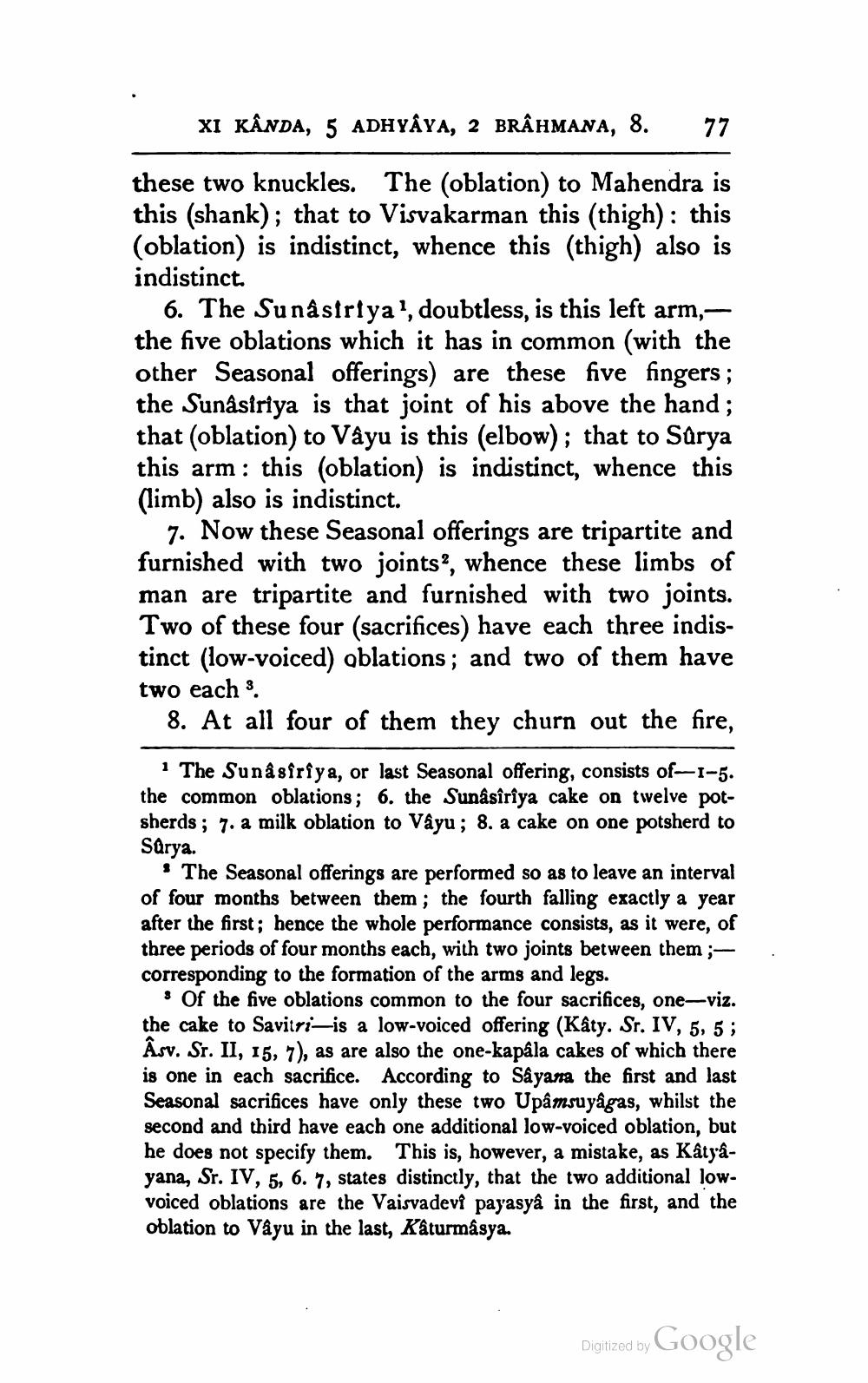________________
XI KÂNDA, 5 ADHYAYA, 2 BRÂHmana, 8. 77
these two knuckles. The (oblation) to Mahendra is this (shank); that to Visvakarman this (thigh): this (oblation) is indistinct, whence this (thigh) also is indistinct.
6. The Sunâstriya1, doubtless, is this left arm,— the five oblations which it has in common (with the other Seasonal offerings) are these five fingers; the Sunâsiriya is that joint of his above the hand; that (oblation) to Vâyu is this (elbow); that to Surya this arm this (oblation) is indistinct, whence this (limb) also is indistinct.
7. Now these Seasonal offerings are tripartite and furnished with two joints, whence these limbs of man are tripartite and furnished with two joints. Two of these four (sacrifices) have each three indistinct (low-voiced) oblations; and two of them have two each 3.
8. At all four of them they churn out the fire,
1 The Sunâsiriya, or last Seasonal offering, consists of-1-5. the common oblations; 6. the Sunâsîrîya cake on twelve potsherds; 7. a milk oblation to Vâyu; 8. a cake on one potsherd to Surya.
'The Seasonal offerings are performed so as to leave an interval of four months between them; the fourth falling exactly a year after the first; hence the whole performance consists, as it were, of three periods of four months each, with two joints between them ;corresponding to the formation of the arms and legs.
* Of the five oblations common to the four sacrifices, one-viz. the cake to Savitri-is a low-voiced offering (Kâty. Sr. IV, 5, 5; Âsv. Sr. II, 15, 7), as are also the one-kapâla cakes of which there is one in each sacrifice. According to Sâyana the first and last Seasonal sacrifices have only these two Upâmsuyâgas, whilst the second and third have each one additional low-voiced oblation, but he does not specify them. This is, however, a mistake, as Kâtyâyana, Sr. IV, 5, 6. 7, states distinctly, that the two additional lowvoiced oblations are the Vaisvadevi payasyâ in the first, and the oblation to Vâyu in the last, Kâturmâsya.
Digitized by
Google




